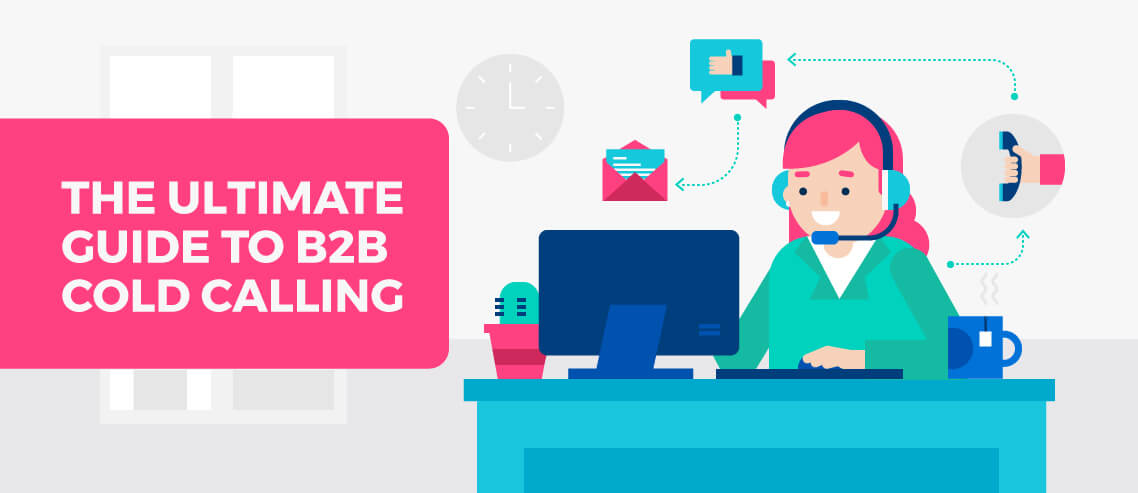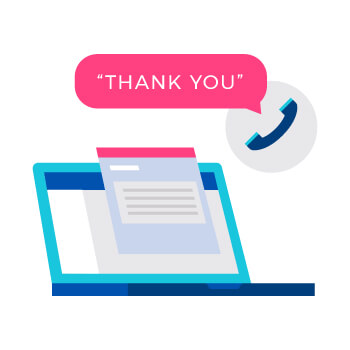The Ultimate Guide to B2B Cold Calling

Contents
Experts have been predicting the demise of cold calling for years. But while it’s true that cold calling as we used to know it isn’t as effective as it used to be, it’s far from dead. Today’s cold outreach simply requires a different approach.
As tempting as it might seem, writing off cold calling could be robbing you of valuable prospects and opportunities. It’s still the single most effective sales tool you have, with more than 92% of customer interactions taking place on the phone. In fact, 75% of prospects in the C-suite say they’re happy to take sales calls.
But what does successful cold calling look like today? How do you effectively find and connect with prospects, and what do you say once you have them on the line? You don’t have to be pushy to get great results from cold calling – you just need the right strategy and a blueprint that will show you how cold outreach should look and function.
Here’s how to make cold calling work for you.
Before the Call
A successful cold call begins before you pick up the phone. There are several steps you can take to prepare yourself for best results.
Set the Right Expectations
When you make a cold call, what are you expecting to get from it? If you answered “A sale,” you’re doing it wrong.
Your objective is to get leads so you can move them through your sales funnel. For a cold call to be successful, it should result in a follow-up action, such as scheduling a meeting, setting up a demo, or sending additional information via email. Your goal isn’t to make a sale, but to establish contact and move your lead to the next step. That’s all.
Target the Right Prospects
Narrowing down your qualified prospects can take some time, but it’s better than wasting time tearing through a list of contacts you have no chance of closing. You want your prospects to be as qualified as possible to maximize your time and resources.
In addition, ideally your first contact with a prospect won’t be a cold call. Warm them up by reaching out via other channels first (think InMail, Twitter, email, or a postcard) so that when they do get a call from you, they’re at least somewhat familiar with your name.
Make Your Call Matter
Remember, you’re reaching out to people who have no idea who you are or why they should give you their valuable time.
Your objective for the call should be important to the person you’re calling, first and foremost. If there’s something in it for them, you’ll have a much better chance of getting them to take your call.
During the Call
Now that you’ve got a strategy in mind, follow these best practices to maximize every minute.
Get Through to the Right Person
One of the biggest reasons cold calling can be frustrating is that it can be a struggle to get around gatekeepers. Ideally, this is where your previous outreach via LinkedIn or email can be helpful with name recognition.
Even if you think you know who you’re supposed to be contacting, don’t always assume you have the right person. Your pre-call research should reveal who you need to speak to at a particular company before you call, but job roles change, and sometimes different departments or decision-makers are involved that you might not be aware of.
So it’s important to confirm if the prospect is the appropriate contact as soon as you get them on the line. Just ask them (or the gatekeeper) – and if they aren’t the person you need, hopefully they’ll be willing to connect you with the right decision-maker.
Take it a step further by asking for an email address or the best time to call so you don’t end up in an endless phone tag session. Remember, it can take an average of eight attempts to connect with someone on the phone and turn them into a lead.
If you have absolutely no idea who you need to talk to, your first priority should obviously be to get a name and a direct line or extension. Auto attendants can be a cold calling goldmine if there’s a company directory you can browse through.
Use the Right Script
It’s hard work to get prospects on the phone, so when you finally do make contact, the last thing you want to do is botch the opportunity with a terrible sales pitch.
So should you use a script or not?
Many salespeople believe they’ll sound robotic or phony if they use one – but this is usually only true if they don’t practice or use it effectively. The advantage of using a script is that you don’t have to reinvent the wheel every time you call a prospect.
Scripts take the guesswork out of what to say when you get your prospects on the line. You’re not wasting valuable time making small talk, adding useless filler, or trying to figure out what works and what doesn’t.
Instead, you’ll be able to stick with your objectives and make it clear why you’re calling. Scripts work very effectively when you think through your sales process and know exactly what you should be saying to turn a cold prospect into a warm lead.
There’s an art to writing an effective sales script, though. Before you decide to use one in your sales organization, make sure you’re working with a professional who can help you get the most out of every word.
Make Your Reason for Calling Clear Immediately
When your prospect answers, you’ve got about 30 seconds to make a good impression.
According to a recent cold calling challenge, one of the best ways to do this is to say something along the lines of “I know I’m interrupting you; can I have 25 seconds to tell you why I called, and then you can decide whether to hang up or learn more?”
It’s a unique, attention-grabbing “in” that also gives your prospect an “out.”
Anticipate Questions and Objectives
One of the easiest ways to turn off your prospects is not being able to answer their questions or stumbling over their objections. The best sales reps are forward-thinking about the questions or objections they’re likely to hear, and will have responses ready.
This can take some practice, especially for new companies and reps that are just starting a cold calling strategy. Good notes are critical so you can set a baseline for future cold calls.
End the Call With an Action
There should always be a takeaway from every call, for both you and your prospect. Make it as easy as possible for them to follow through, too. For example, if you’ve agreed to set up a follow-up call, utilize a tool like Calendly to share a scheduling link that allows the prospect to easily and automatically select a time that works, without all the back-and-forth.
Document the Call
It’s best practice to take notes as you go, but if you’re using a script or otherwise concentrating on the conversation, typing notes into a CRM might not be an option.
Immediately after hanging up, document call details while they’re still fresh in your mind. Don’t leave out anything, even if you think it’s not significant. When you review the call later, those details can really stick out and may create talking points for future conversations.
After the Call
Regardless of how the call went, send the prospect a quick follow-up email immediately after hanging up to thank them for their time and outline next steps, if there are any. This extra touchpoint gives them a way to easily contact you, and leaves them with a positive impression of you and your company.
If it will be longer than a week before your next touchpoint (i.e. a scheduled meeting, follow-up call, etc.), send another email prior to the next step to let them know you’re looking forward to your upcoming conversation.
Long Live the Cold Call
Cold calling shouldn’t be nerve-wracking, especially when you consider that it’s a direct line to new business. The best way to conquer the cold call is to stay positive and confident every time you pick up the phone – with the right mindset and the right strategy, you’re bound to be successful.





